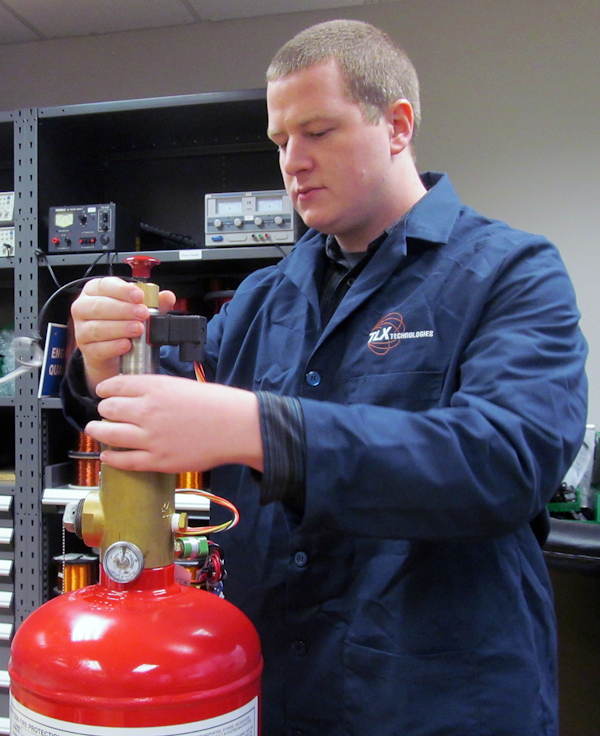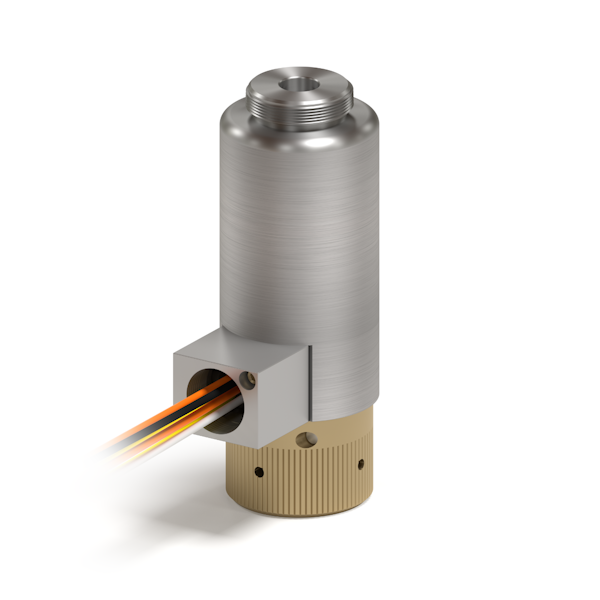Latching Solenoid Actuator with Internal Supervisory Feature

Protection of life and property has always been the primary purpose of fire suppression equipment manufactured by system manufacturers globally. While configuration of these systems can differ based on the system components, the extinguishing agent and the environment in which the system is used, the objective remains the same.
One of the key components in a fire suppression system is the suppressant releasing device that initiates the mechanical discharge of the extinguishing agent that will combat the fire. Many systems utilize a latching solenoid actuator, more commonly referred to as an electric actuator, as the releasing device. The actuator is attached to the discharge valve on the cylinder storing the suppressant and is electrically connected to the fire alarm control panel. Once the actuator receives an electrical signal, it will deploy, causing the discharge valve(s) to open and dispense the extinguishing agent into the system.
TLX Technologies’ latching solenoid actuators are designed for durability and ultra-fast response with consistent performance over a 15-year life span. However, the suppression system is open to potential failures due to human installation error during routine maintenance and functional testing of the actuator. If the releasing device is not fully installed onto the discharge valve, the release actuator will not open the valve and dispense the extinguishing agent, resulting in a system failure. Without an installation supervisory signal between the electric actuator and fire panel there is no indication of proper installation leaving the responsibility of accurate installment solely on the technician who removed the actuator for maintenance or testing purposes. Industry regulators quickly recognized that adding supervisory requirements to the release actuator would provide for the necessary alarm (both visually and audibly) to alert the technician on whether the actuator was correctly installed and in the right position for proper system functionality.

TLX Technologies is proud to introduce the next generation of our latching solenoid actuator for fire suppression systems with active installation supervision. The additional supervision incorporated in our next gen actuator meets the new standard (NFPA 2001: Sec. 4.3.4.1) from the National Fire Protection Association (NFPA) that is required on all clean-agent fire extinguishing systems by January 1, 2016. This new regulation addresses the concern of proper installation of the actuator by providing the necessary supervision within the actuator to provide the installation technician with both a visible and audible check to ensure proper installation.
TLX’s UL recognized and patented component allows for fully-engaged installation detection to be configured to a system’s exact needs. The component is designed with an internal supervisory feature that eliminates the need for an additional component or electrical connection. Rugged construction, ultra-fast response and the ability to be reset ensures consistent performance over the solenoid’s entire 15-year life span. In addition, TLX can adapt the supervision capabilities to a pneumatic actuator for slave cylinders as needed.
This article was originally published by Asia Fire Protection in January 2016
Want to explore design examples?
TLX Technologies is the go-to custom solenoid partner of the world’s top brands, first-tier suppliers, and OEMs